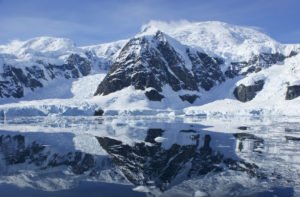Hundreds of metres of solid ice were lost from West Antarctica’s glaciers between 2002 and 2009, according to a US-led study published today in Nature Communications.
 Warm ocean waters beneath ice shelves are linked to melting the ice from below, but the effect is difficult to measure. Using data collected from a NASA airborne study, the researchers examined melting rates of three glaciers in the Amundsen Sea embayment. They found the Smith Glacier lost as much as 70 metres per year and almost half a kilometre of ice thickness in total.
Warm ocean waters beneath ice shelves are linked to melting the ice from below, but the effect is difficult to measure. Using data collected from a NASA airborne study, the researchers examined melting rates of three glaciers in the Amundsen Sea embayment. They found the Smith Glacier lost as much as 70 metres per year and almost half a kilometre of ice thickness in total.
More information about the research is available on scimex.org.
The SMC gathered the following expert comment on the study.
Associate Professor Andrew Mackintosh, Deputy Director Antarctic Research Centre, Victoria University of Wellington, comments:
“The underside of ice shelves – the basal zone where floating ice meets the ocean – is one of the most inaccessible places on Earth. Yet this is where rapid ice sheet retreat in Antarctica is being driven. Satellites sensors cannot see through ice sheets to this zone, and field-based campaigns are time-consuming and logistically challenging, especially in the sectors of Antarctica where the ice sheet is changing most rapidly.
“Khazendar et al. use careful and precise, repeat radar measurements of ice thickness from aircraft to map changes in basal melting in this zone through time. Their results, which constitute some of the only direct measurements of basal ice shelf melt, confirm that the Amundsen Sea region of Antarctica is a hot spot for rapid ice sheet changes. What is surprising and new though, is the amount of melt that has been documented in this study. The authors show that a truly astonishing amount of ice (~300-490 m) has been lost in less than a decade in this region.
“How do these findings influence our thinking about the future of ice sheets, and sea level change? The authors show that extremely rapid ice sheet changes can be driven by increases in ocean heat. Future ocean warming will undoubtedly lead to similar or increased levels of melt, but over a wider region. They also show that the exact pattern of ice shelf melting depends on regional conditions, such as the exact temperature of the ocean water, and the topography of the sub-ice shelf cavity. This makes it difficult to predict the future of ice sheet using models because they often lack these details.
“The overall message is that ice sheets can change rapidly and will likely do so in the future – but predicting the sea level contribution from melting ice sheets remains a challenge.”